The once great and diverse ecosystems of Australia have been ravaged by numerous brushfires resulting in an estimated 3 billion animals being harmed, killed, or displaced. In an effort to restore and save the species and biomes of Australia, rewilding poses a proven way to help conservation efforts. Rewilding Australia comes in many forms, from working in urban and rural environments to involving and incorporating Aboriginal Australians and ideas in projects. Here we discuss what rewilding would look like, its benefits and purposes, and success stories.
Current state of Australia’s wilderness and wildlife
It’s no secret that Australia hosts an incredible abundance of biodiversity in both plant and animal species and landscapes. Following the raging bushfires of 2019 and 2020, Australia’s extraordinary wildlife and unique ecosystems have continuously sparked global media attention. Its flora and fauna have experienced a long history of human modification. They have surely felt the subsequent stresses humans exert on existing natural systems, which are only enhanced by the country’s evolutionary isolation.
The devastating bushfires of 2019 and 2020 damaged nearly 85,000 sq km of forest and harmed, killed, or displaced an estimated 3 billion animals in the process. Many ecologists posit that the fires will undoubtedly push many species to extinction. However, the fires’ ultimate impacts on the country’s biodiversity will not be fully realized for many years to come, as extinctions often have cascading effects on their surrounding environments and the other organisms that inhabit them.
The addition of overfishing, plastic pollution, and coastal development have contributed to the destruction of the country’s famously exquisite coral reefs, with a recorded 50% loss of coral cover between 1985 and 2012. Furthermore, Australia has lost over 40% of its forest cover, and much of the remaining forested areas are fragmented or have been logged. These changes call for interventions that will mend damaged ecosystems and aid in restoring Australia’s incredibly varied landscapes and the species that depend upon them.
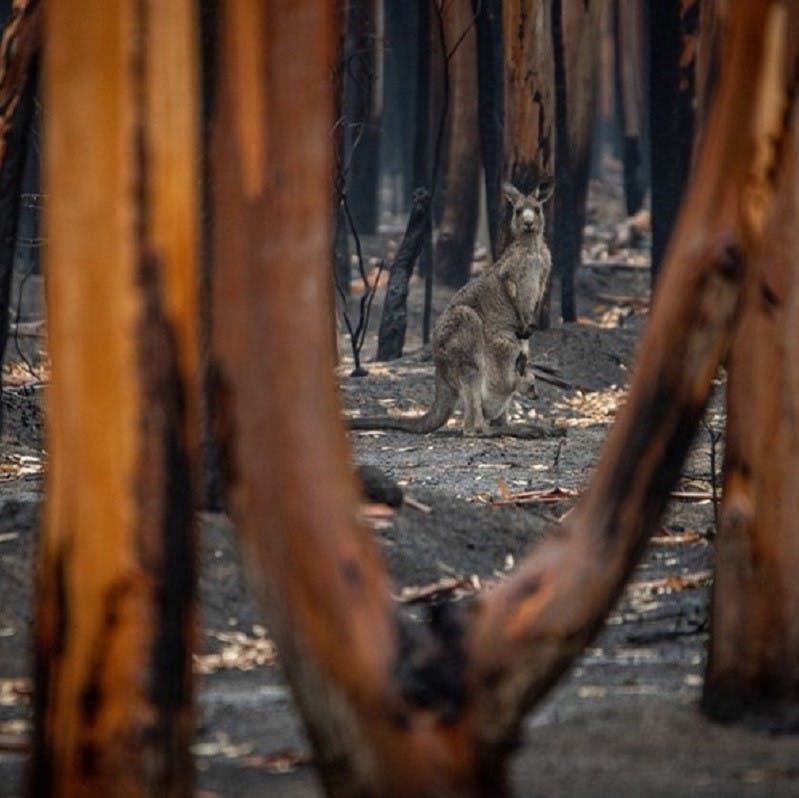
What would a rewilded Australia look like?
As stated in Rewilding in Britain, rewilding is a conservation strategy that aids in restoring biodiversity, supports ecosystem health, and restores natural processes, or the way that natural systems would behave if humans were not involved. Rewilding in Australia could take many different forms, given the incredible diversity of species and landscapes. For example, it could involve repairing damaged ecosystems to support the natural growth of different plant and animal populations to reintroduce particular native species to a landscape to repair broken food chains.
Ideas and Projects on Rewilding Australia
Current rewilding suggestions and projects range from reintroducing Tasmanian Devils (Sarcophilus harrisii) to the mainland to mend past food chains to reintroduce the brush-tailed bettong to the southern Yorke Peninsula. Scientists have also cited the importance of restoring predator populations that have experienced severe range contractions, such as the restoration of dingo populations, which exhibit top-down control of invasive mesopredators like the red fox. Rewilding Australia would also involve incorporating ancient Indigenous practices of forest management, which would aid in managing fire-prone forest ecosystems and preventing wide-scale destruction, as we saw with the unprecedented bushfires in 2019 and 2020.
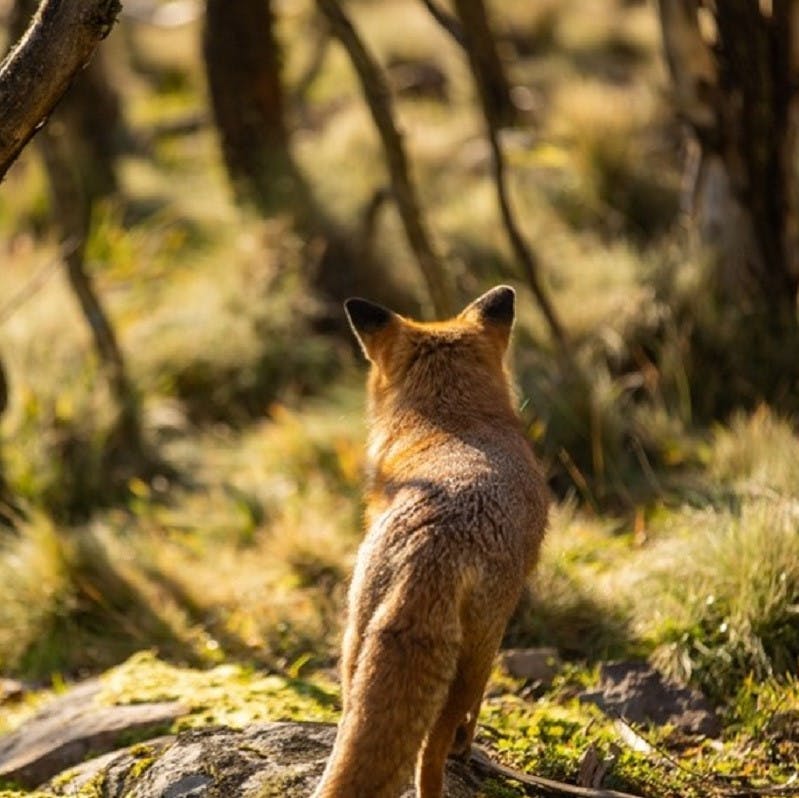
A species can only survive when everything around is surviving.
Sir David Attenborough makes clear that humans and the natural world are interconnected, and by rewilding we can help our species and others to survive.

Take action now
Do you want to have a direct impact on climate change? Sir David Attenborough said the best thing we can do is to rewild the planet. So we run reforestation and rewilding programs across the globe to restore wild ecosystems and capture carbon.
Get involvedFears and Misconceptions
While rewilding has gained popularity globally, many believe Australia may need to take a distinctive approach given its immense biodiversity and unique range of landscapes. Take passive rewilding, or the removal of human agriculture to allow native vegetation to grow, for instance — Australia’s fire-prone ecosystems may not allow for vast areas of land to be cleared or altered in a short manner of time. Because of its many native and non-native species, removing a specific animal or population may also have cascading ecosystem-level effects on the surrounding landscape and the species that reside on it.
Additionally, 70% of Australia’s human population lives in cities, and 85% live in urban areas. As such, urban rewilding projects should occur in conjunction with rural ones to increase community engagement and acceptance of rewilding methods. On top of concerns surrounding the necessity of a unique approach to rewilding, many may initially be opposed to rewilding strategies if they believe they will negatively impact the well-being of current socioeconomic systems that depend on the land, such as agricultural work.

The benefits of rewilding Australia
There are several benefits to rewilding Australia that serve both the natural world and human systems. Passive rewilding would support increased forest cover and raise biodiversity levels that depend upon native trees. Trophic rewilding, or the reintroduction of particular species to restore top-down or bottom-up trophic interactions and their associated trophic cascades, could economically benefit local crop farmers, given that it would keep overabundant native and invasive herbivores in check.
Urban Rewilding
Urban rewilding initiatives, such as reintroducing pollinators, small mammals, or reptiles that are generally well-accepted by humans, could have two-fold effects on ecosystem health and public engagement in conservation efforts. People can also directly or indirectly benefit from revenue generated by wildlife tourism, reduced predator grazing on parks and agricultural land, and ecological services such as flood control.
Rewilding and Aboriginals
Rewilding in Australia can directly benefit the original stewards of the land, Aboriginal Australians, as much of the country’s biodiversity is found on lands belonging to Indigenous peoples, and rewilding efforts can and should involve and incorporate the voices of Aboriginal Australians who have understood and been tending to the land for centuries.
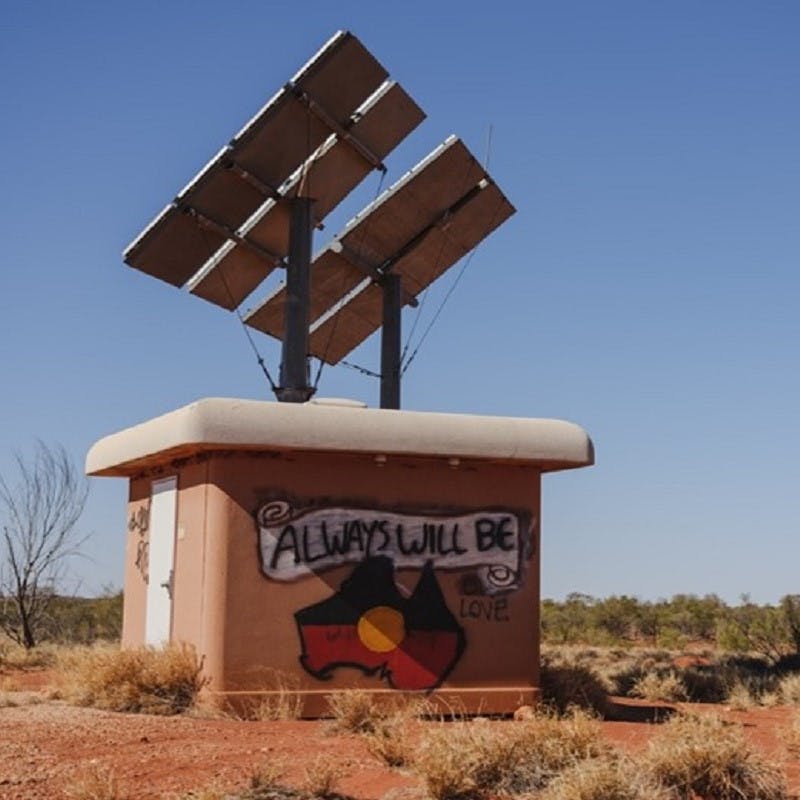
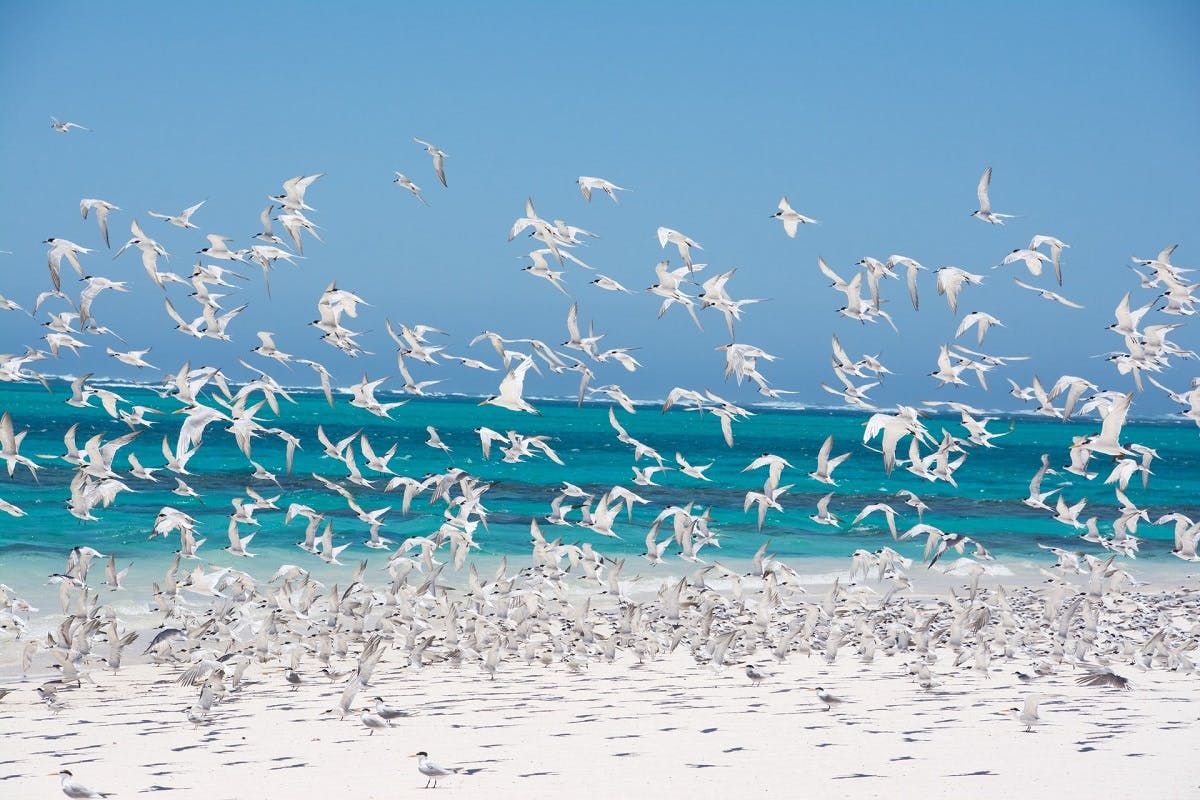
Some success stories
Rewilding efforts have already swung into action in Australia, many of which have proven to be rather successful. For instance, in Jervis Bay, WWF-Australia and Rewilding Australia partnered to reintroduce a population of eastern quolls (Dasyurus viverrinus), which the mainland had lost for nearly fifty years, to a national park on the New South Wales South Coast. The quoll population has continued to persist and reproduce despite the devastating bushfires that devastated Australia in 2019 and 2020.
The Australian Wildlife Conservancy and Arid Recovery have also had great success in utilizing fenced enclosures to prevent foxes and cats from interfering with the recovery of native small mammals; while this approach is not directly considered a valid rewilding tactic, since fences do not necessarily point towards self-sustaining ecosystems, it is an example of a successful intervention that has allowed native species to flourish By recognizing our collective impact on the natural environment, we can take matters into our own hands and use rewilding as a tool to repair our relationship with the land and improve the well-being of other organisms.

Key figures and projects in Australia
As mentioned, WWF and Rewilding Australia have had notable success in their rewilding projects. They have begun ambitious new programs, such as reintroducing 20 locally extinct species to the Yorke Peninsula and restoring populations of threatened species such as Tasmanian devils, bandicoots (Peramelemorphia), quolls (Dasyurus), bettongs (Bettongia), and potoroos (Potorous).
Rewilding Australia
A major player in Australia’s existing rewilding scene, Rewilding Australia uses scientific methods and Indigenous Ecological Knowledge to repair Australia’s ecosystems and revive the native populations that rely on them, especially those with critical ecological roles.
Aussie Ark
Aussie Ark, another key player, aims to protect Australia’s threatened species through insurance populations, sanctuaries, and rewilding projects. These projects include reintroducing brush-tailed rock-wallabies (Petrogale penicillate), aiding the Tasmanian devil (Sarcophilus harrisii) in returning to mainland Australia, restoring freshwater turtle populations, and removing noxious introduced weed to rehabilitate Australian forests.

What the future holds
In the end, Australia offers a promising and exciting outlet for rewilding work, given its vast array of ecosystems and its critical need for their protection. With various rewilding projects already underway and proving to be quite successful, such as those instituted by WWF-Australia, Rewilding Australia, and Aussie Ark, the concept of rewilding Australia has gained significant popularity.
Inspiration can also be pulled from successful projects in other countries; for instance, scientists suggest that approaches to predator-friendly farming similar to those used in North America and Africa may prompt positive socioeconomic and environmental outcomes in Australia, as well. Rewilding and restoration of coral reefs in other areas of the world, such as the Hawaiian Islands, may also offer a promising application to Australia’s Great Barrier Reef.
Ultimately, humans exert massive control over other species’ abundance and well-being, and these impacts do not necessarily have to be negative. Rewilding is a productive way for humans to use their ecological power to restore rather than damage precious ecosystems. A rewilded Australia would blur the lines between the natural world and our human world by restoring its spectacular biodiversity and promoting self-sustaining ecosystems.
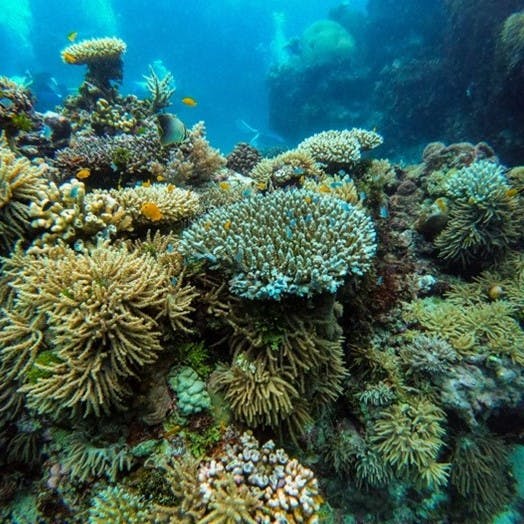
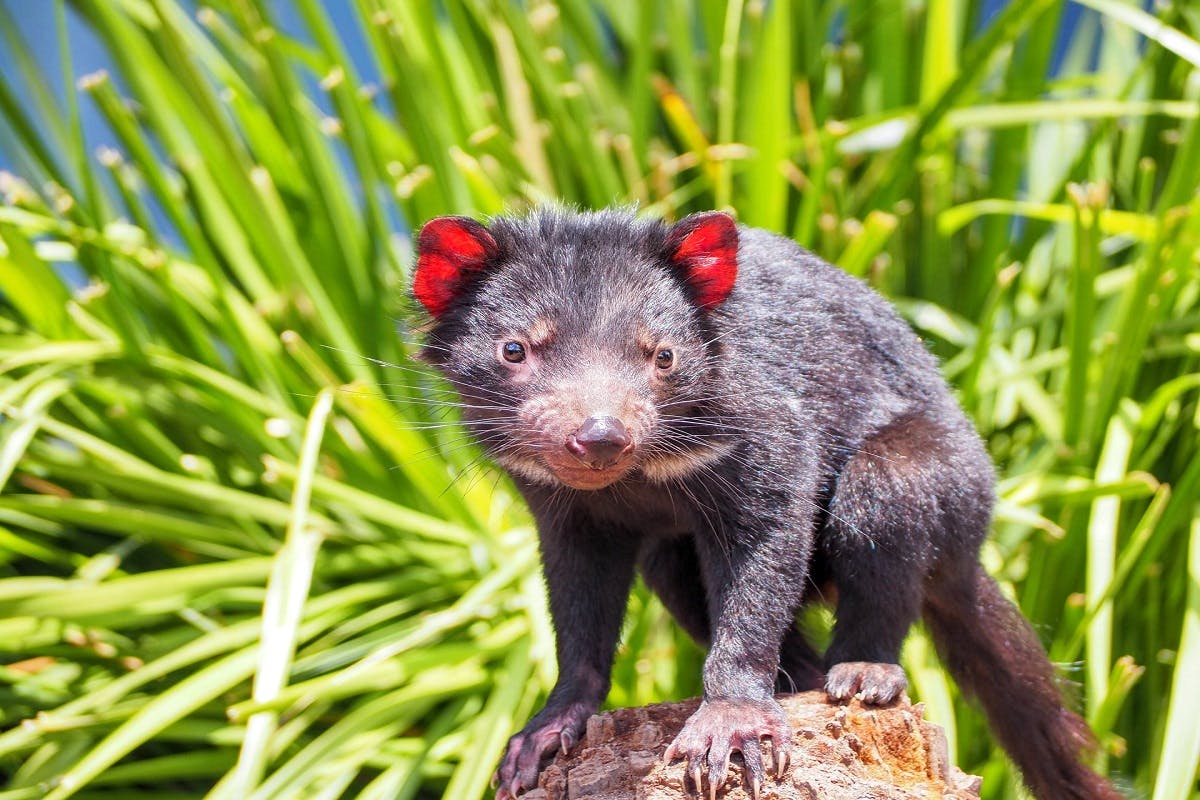
Glossary of terms
Biodiversity: the variety of life in the world, a particular habitat, or ecosystem
Trophic Rewilding: an ecological restoration strategy that uses species introductions to repair top-down or bottom-up trophic interactions and their associated trophic cascades to promote self-sufficient, biodiverse ecosystems
Passive Rewilding: an ecological restoration strategy that aims to reduce human intervention in ecosystems by giving land that has been cultivated by humans back to nature and restoring its natural processes to allow nature to develop and flourish on its own
Mesopredators: mid-ranking predators in the middle of a trophic level that typically prey on smaller animals
Trophic Cascade: an ecological phenomenon caused by the loss, reintroduction, or recovery of a species within an ecosystem resulting in other species who are indirectly connected via the food web being affected. Those effects influence the connected species and the species connected to them, causing a cascade through the food web where dramatic changes in ecosystem structure and nutrient cycling can happen.
Insurance Populations: the populations from which the individuals to be released into the new habitat, will be picked
Sources & further reading

- “An Australian Approach to Rewilding” - Conservation Biology
- “After the Megafires: What's Next for Australian Wildlife?” - Science and Society
